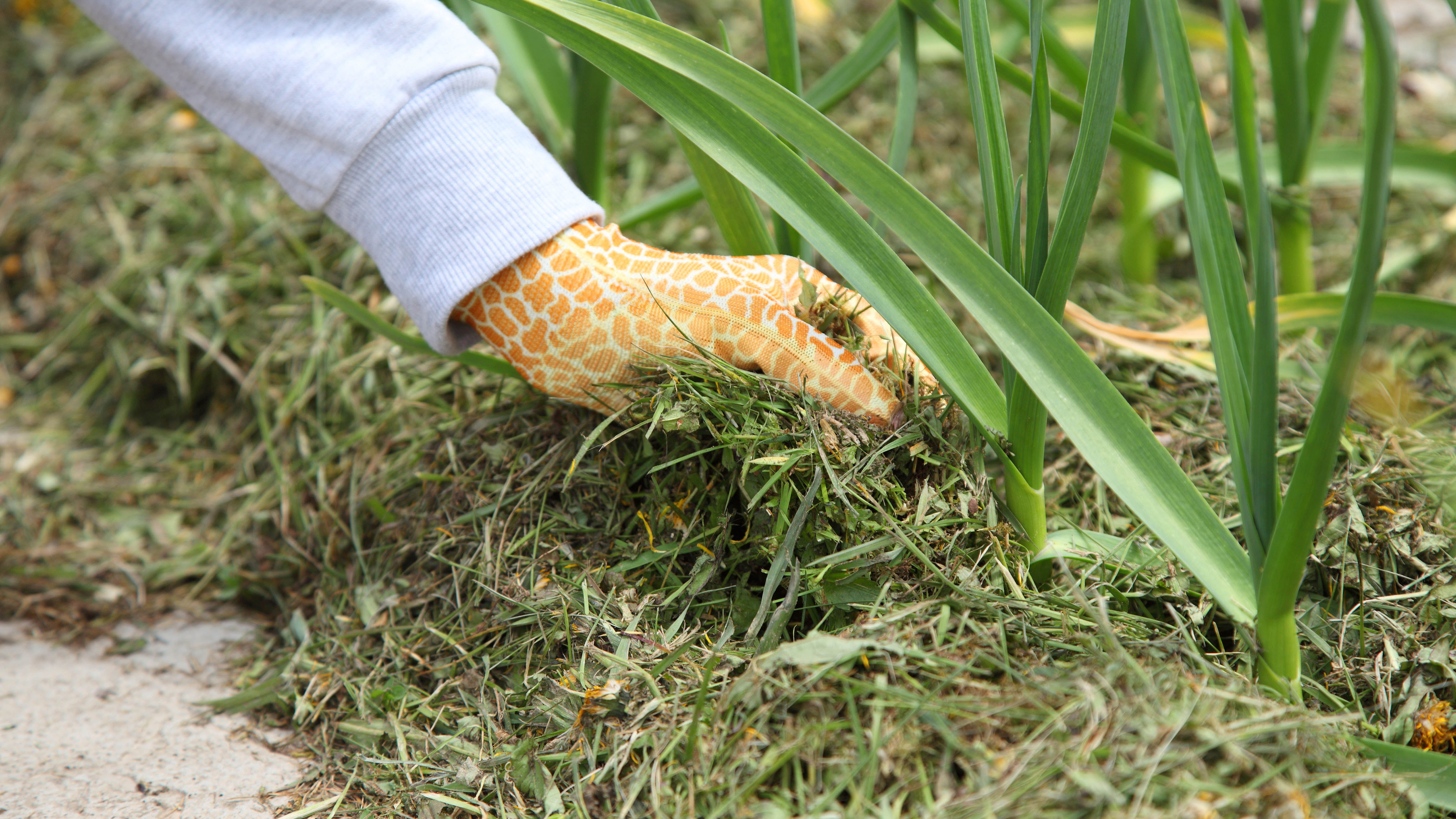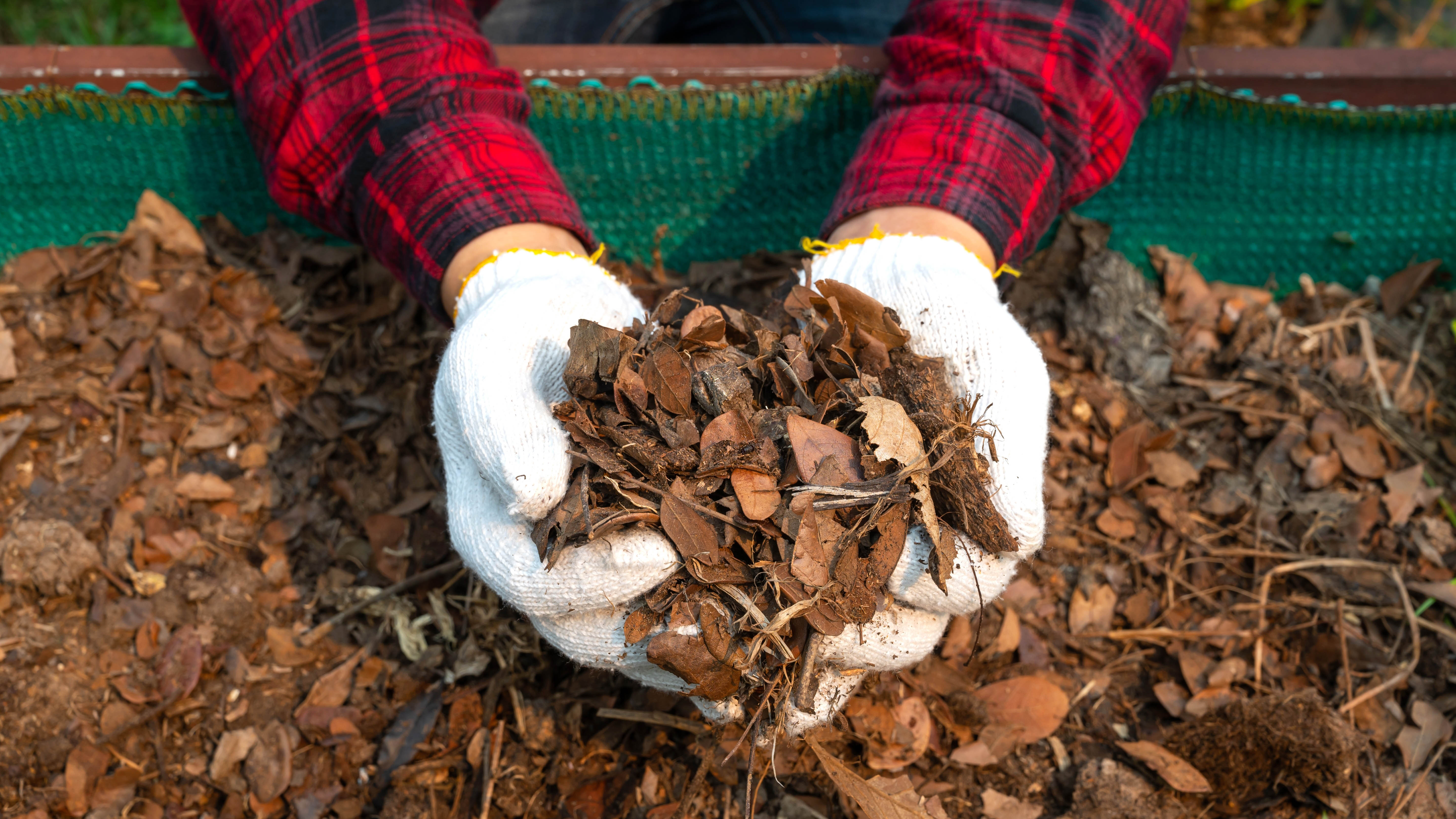9 ways you can reuse grass clippings after mowing
Find out how you can repurpose your leftover grass clippings

With summer on the way, it’s the perfect time to get the mower out, and make sure your lawn is kept in good shape and condition.
Be it regular maintenance, or achieving that perfectly striped lawn, you’re probably wondering what to do with the piles of grass clippings after mowing. And while bagging up piles for disposal may seem like the easiest method, you’ll be glad to know there are clever ways you can actually reuse grass clippings.
In fact, grass clippings can be repurposed in several useful ways, which will benefit from its rich source of organic minerals, and nutrients it provides. Plus, this is far more eco-friendly, and reduces waste.
So before throwing out your leftover grass, put it to good use around the garden with these 9 ways you can reuse grass clippings after mowing.
Before you do however, check out 9 ways to get the most out of your lawn mower and how to make your lawn thicker in 7 simple steps. Plus, here are 7 ways to collect and reuse rainwater.
1. Feed the grass

This may seem counter-productive, but experts suggest leaving grass clippings where they are! When cuttings of up to 1 inch are left to decompose naturally on the lawn, this will fertilize your grass.
Clippings contain essential nutrients such as phosphorus, nitrogen, and potassium — all of which are needed for a healthy lawn. This natural (and free) fertilizer also means you don’t have to spend a fortune on commercial fertilizer sprays or products. The best method is to rake and spread out any wet clumps evenly, to prevent thick layers from smothering and damaging your lawn. Plus, this will help grass to decompose quicker.
Sign up to get the BEST of Tom's Guide direct to your inbox.
Get instant access to breaking news, the hottest reviews, great deals and helpful tips.
In addition, leaving the grass clippings on your lawn helps it to retain moisture during those hot, summer months. And since grass contains 80% moisture, this should prevent your grass from turning brown in a heatwave. Or else you’ll need to know these tips on how to revive dead grass, and make your lawn green again.
Coffee grounds can also be used to fertilize your plants — it's one of the 7 surprising ways you can reuse old coffee grounds.
2. Throw onto the compost heap

Another useful tip is to simply add clippings to your compost heap. Grass will add essential nitrogen to your decomposing pile, which will also add nutrients to the soil. It’s important to never compost grass clippings on their own, as it should always be balanced out with dry/brown compost materials, such as dried leaves, straw or shredded paper. Experts recommend a 1:1 ratio of green to brown mix for successful composting.
Remember to regularly turn over your compost to improve oxygen flow and reduce smelly odors. Essentially, composting is a process where organic matter is broken down (or ‘eaten’), by naturally occurring microorganisms. These break down the waste, changing its structure to create a healthy nourishment for plants.
3. Turn it into mulch

Similarly, grass clippings can be used as mulch around your garden and borders. Simply place thin layers of grass clippings (no more than 1-2 inches thick), around your plants, shrubs or even vegetable plots.
This will break down naturally, adding valuable nutrients to the soil, such as nitrogen and potassium, regulate soil temperature, and prevent weed growth. You can also add clippings to line paths in the garden or yard to reduce mud, and prevent weeds in exposed areas. What’s more, you won’t have to buy mulch from the garden centre anymore!
Before you spread around your garden, ensure you dry your clippings in the sun for a day or so. And never use clippings that have been treated with chemicals or other herbicides.
Bear in mind that fermenting grass often releases an unpleasant smell, so it might be best to prewarn any guests! For more top tips, check out here’s when you should replace mulch and why.
4. Protect hedges

Besides being a natural fertilizer, grass clippings are also known for combating weed growth. And if you take pride in your well-manicured hedges or bushes, this will prevent unsightly weeds, ruining the aesthetics!
Simply place a layer of grass clippings underneath the base of your hedges and bushes to deter weeds from growing. Experts recommend adding about an inch and a half of clippings around the base of hedges to avoid the main stems.
In addition, as the grass breaks down, the water content will absorb into the soil, ensuring it’s kept moist in warmer weather. Just avoid these 7 mistakes when trimming a hedge for best results.
5. Bedding for animals

If you or any friends have household pets such as rabbits or guinea pigs, grass clippings can make cozy bedding. Be sure to dry out the grass first by turning over daily until it has completely dried out. Then you can place this homemade hay in their cages to provide warmth and comfort.
Remember to never use any grass clippings that have been treated with chemicals or pesticides, as this can be harmful to animals.
6. Start a ‘lasagne garden’

Just as the name suggests, lasagna gardening is a method of building up layers of carbon and nitrogen yard materials to create a raised bed. First, choose an area in your backyard, and place a thin layer of twigs on the ground. Then add a layer of brown material (dry leaves), on top of that, before adding a layer of grass clippings.
Keep alternating the layers until you have about two layers of each type, before topping with more dry leaves, damp newspaper, and layers of cardboard.
Then, leave the materials to sit and naturally break down for a couple of months. This should create a nutrient-rich plot that is ready for planting or homegrown veggies. It’s also best to keep the raised bed moist (not soaked), to help the decomposition process.
7. Make plant ‘tea’

Since grass clippings are nitrogen-rich, why not make your own liquid fertilizer? First, take a bucket and fill two thirds of the way with fresh grass clippings. Then, fill the rest of the way with water, before covering with a cheesecloth or lid.
Keep the bucket in the shade, allowing the solution to "brew" for about one to two weeks. Then, carefully fill a watering can/cup and pour around the base of your plants, veggies or around shrubs. You can even pour into a clean spray bottle and use on your beloved houseplants. Not only will this provide all the nutrients your garden needs, but should give plants a healthy boost.
Try to use your homemade fertilizer at one time, and avoid storing leftovers as it will start to smell bad. In any case, you’ll save yourself cash on buying commercial fertilizers.
8. Add to your worm bin

If you enjoy composting, why not get a worm composter? Worm composters essentially use worms to eat food scraps and other organic waste, and turn it into a type of soil called vermicompost. Recycle leftover grass clippings by spreading out evenly a handful or two of clippings in your worm bin. Ensure they don’t clump together and form wet balls of grass, as this will make it difficult for your working worms to eat.
Alternatively, you can leave the clippings to fully dry out, before using it as worm bedding. Don’t forget to mix it up with equal parts of dry leaves (brown waste), for extra comfort!
9. Feed your potted vegetables

Whether you’re growing veggies in pots outdoors or on your balcony, they can benefit from grass clippings. To prevent plants from drying out quickly, sprinkle a thin layer of grass clippings on the top of the soil — only 1 to 2 inches.
Not only will this lock in the moisture, but will also provide all the essential nutrients that plants need for healthy growth.
Donate or recycle

If you don’t want to reuse your grass, or have excess clippings, you can simply donate or recycle your clippings. Donate to family, friends or even your local schools who may need it for their communal gardens.
In addition, check with your local authority if there are recycling pick-up services available, or a center near you. Remember to never donate or use grass clippings if they have been treated with herbicides, pesticides, or any other harmful chemicals.
More importantly, never burn your grass clippings, as this will release toxic smoke and carbon that is harmful to you, family and the environment.
More from Tom's Guide

As the Homes Content Editor, Cynthia Lawrence covers all things homes, interior decorating, and garden-related. She has a wealth of editorial experience testing the latest, ‘must-have’ home appliances, writing buying guides and the handy ‘how to’ features.
Her work has been published in various titles including, T3, Top Ten Reviews, Ideal Home, Real Homes, Livingetc. and House Beautiful, amongst many.
With a rather unhealthy obsession for all things homes and interiors, she also has an interior design blog for style inspiration and savvy storage solutions (get rid of that clutter!). When she’s not testing cool products, she’ll be searching online for more decor ideas to spruce up her family home or looking for a great bargain!
